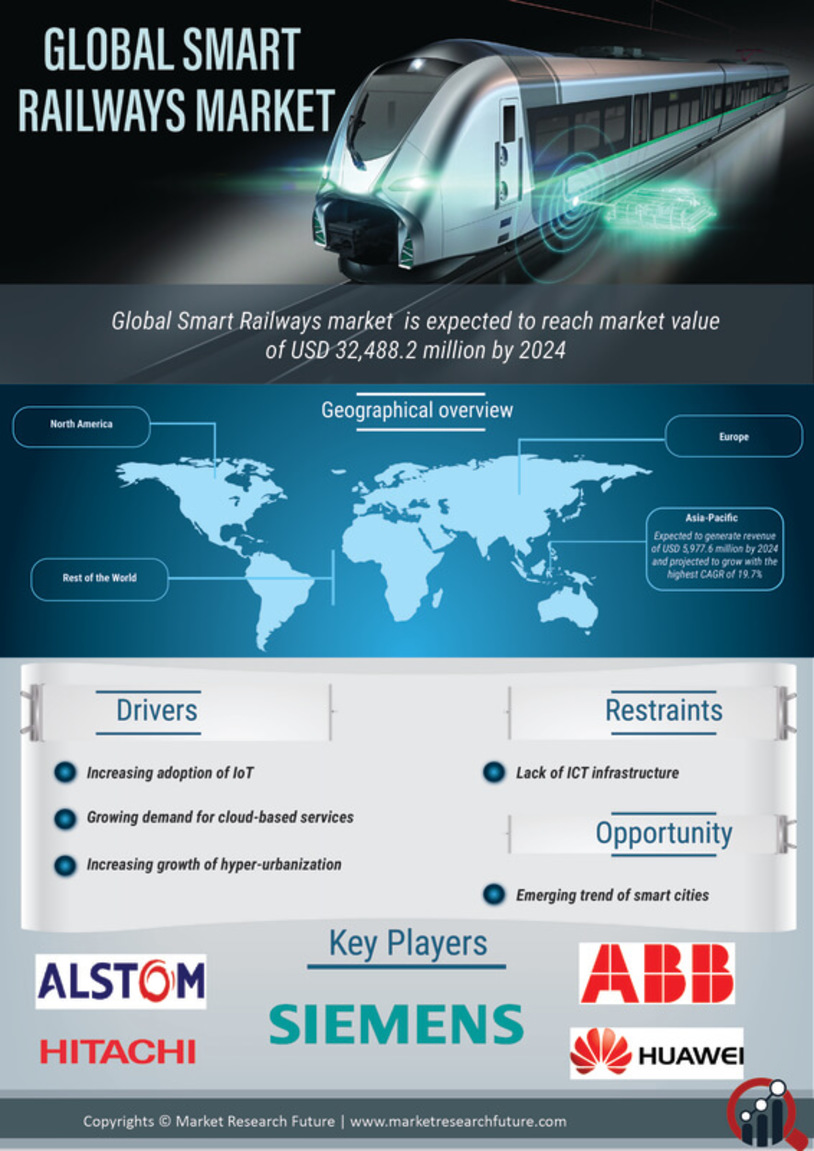Major market players are spending a lot on R&D to increase their product lines, which will help the Smart Railway industry grow even more. Market participants are also taking various strategic initiatives to grow their worldwide footprint, including new product launches, contractual agreements, mergers and acquisitions, increased investments, market developments and collaboration with other organizations. Competitors in the industry must offer cost-effective items to expand and survive in an increasingly competitive and rising market industry.
One of the primary business strategies manufacturers adopt in the Smart Railway industry to benefit clients and expand the sector is manufacturing locally to reduce operating costs. In recent years, Smart Railway industry has provided medicine with some of the most significant benefits. The Smart Railway market major player such as Cisco Systems Inc. (US), Alstom SA (France), General Electric Inc. (US), Hitachi Limited (Japan), International Business Machines Corporation (US), Huawei Technologies Co. Ltd (China), Bombardier Inc. (Canada), Siemens AG (Germany), Indra Sistemas SA (Spain), Thales Group (France) and Teleste (Finland).
Located in Chiyoda, Tokyo, Japan, Hitachi, Ltd. is a multinational conglomerate corporation. It served as a component of the Nissan Zaibatsu, the DKB Group, and the Fuyo Group of companies before DKB and Fuji Bank merged to form the Mizuho Financial Group. It is the parent company of the Hitachi Group. In July 2022, European Rail Traffic Management System (ERTMS) signalling will be implemented throughout the region thanks to a partnership between Swedish railroad company TGAB and Japan-based fully integrated rail solutions provider Hitachi Rail Limited.
Based on ERTMS and STM-ATC2 technologies, Hitachi Rail Limited will design, construct, instal, test, certify, and commission the onboard signalling system. Trains will be able to run on regular lines thanks to STM-ATC2.
Alstom is a French multinational company that manufactures rail transportation equipment and does business all over the world. It manufactures high-speed, suburban, regional, and urban trains along with trams, and it is active in the passenger transportation, signalling, and locomotive industries. In January 2021, B&C Transit, Inc., a transit engineering design and construction firm focusing in the passenger rail industry, was acquired by Alstom SA, according to a press release. Transit agencies and operators across the United States and Canada will benefit from Alstom's strengthened position in the North American signalling market as a result of this deal.

















Leave a Comment